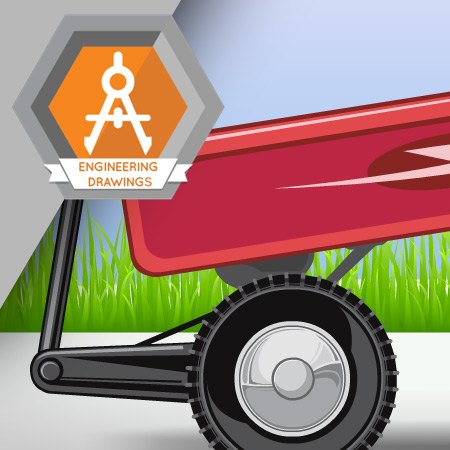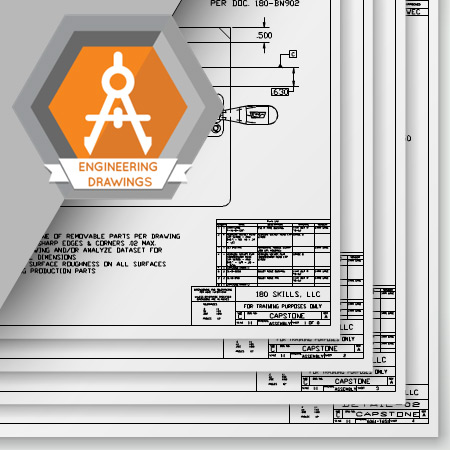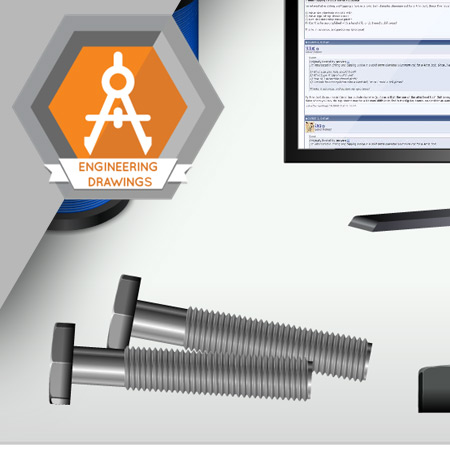
Size dimensions can often restrict a feature more than is needed. When the shape or form of a feature is more important than its size, a geometric dimension and tolerance is typically used.
Learning Objectives
- Define maximum and least material conditions
- List the five geometric characteristic categories
- Identify geometric characteristic symbols
- Define a datum and datum feature
- Describe, identify, and interpret dimensions for angular features
- Identify the sections of a feature control frame
- Describe where datum feature symbols are located on an engineering drawing
Language: English
Estimated Time (Hrs.): 1.4
Micro-module: No
Micro-module Series: No

The ability to read an assembly drawing and identify the components is important to many people working in manufacturing. It is also important to understand how dimensions and tolerances affect how easily the components should assemble or fit together.
Learning Objectives
- List and describe two methods of displaying an assembly in an engineering drawing
- Interpret an assembly drawing
- Define the types of fits
- Determine the type of fit between two mating parts
Language: English
Estimated Time (Hrs.): 1
Micro-module: No
Micro-module Series: No

Threaded fasteners are frequently used in assemblies. Understanding the terms associated with threads and threaded fasteners is important for anyone working with fasteners and other parts with threads.
Learning Objectives
- Describe the function of a threaded fastener
- Identify the basic characteristics of a thread
- Describe how to specify threaded fasteners
- Identify the size and type of fastener given an example
- Define the grades of bolts
- Identify the grade of a bolt
Language: English
Estimated Time (Hrs.): 1.3
Micro-module: No
Micro-module Series: No
